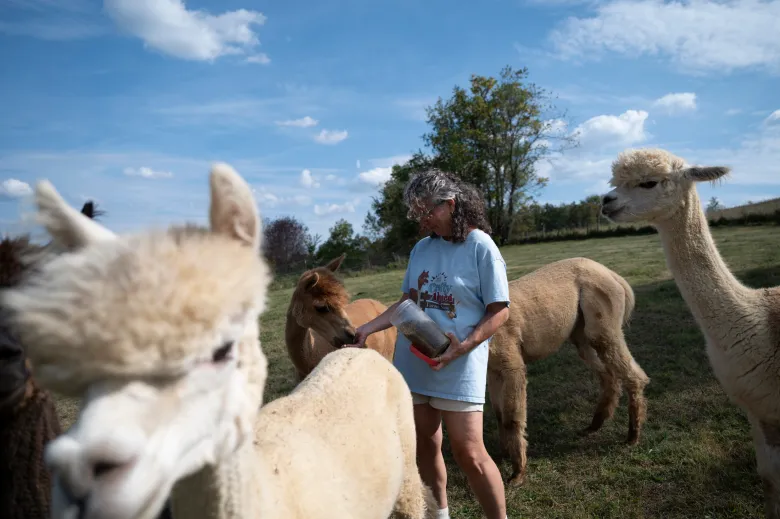
Overview:
Mary Burns and her family have turned the small farm into a sustainable agritourism venture.
The teenage girls working the McDonald’s drive-thru weren’t prepared for what rolled up to their window in Avella one afternoon. A Subaru Forester, sure, nothing unusual there. But poking out of the back seat was a long neck, two comically large eyes, and a cloud of fleece.
“We don’t know what that animal is,” one of the girls said, staring wide-eyed. “But can they have a chicken nugget?”
Mary Burns, perfectly deadpan, declined on behalf of her passenger, a pet alpaca hitching a ride home. “No chicken nuggets,” she said, “but thanks for asking.”

That’s the paradox of The Crafty Alpaca: the surreal has long since become routine. After two decades, Burns’ 22-acre farm in Avella — a rural corner of Washington County about 34 miles (roughly 53 minutes) southwest of Pittsburgh — is home to 13 alpacas and one llama, all raised for their soft, coveted coats and for the delight of everyone who comes to meet them, from Girl Scouts and 4-H clubs to full-on charter buses.
Love at first sight
The Crafty Alpaca didn’t come from generations of farmers passing down the land. Burns and her husband were Monroeville suburbanites, she a teacher, he a physician. Then, in 2004, they ditched the cul-de-sacs for more land and a slower pace of life, landing in Avella to stay close to family in the South Hills. Farming wasn’t even on the mood board.
And then came the Hickory Apple Festival.
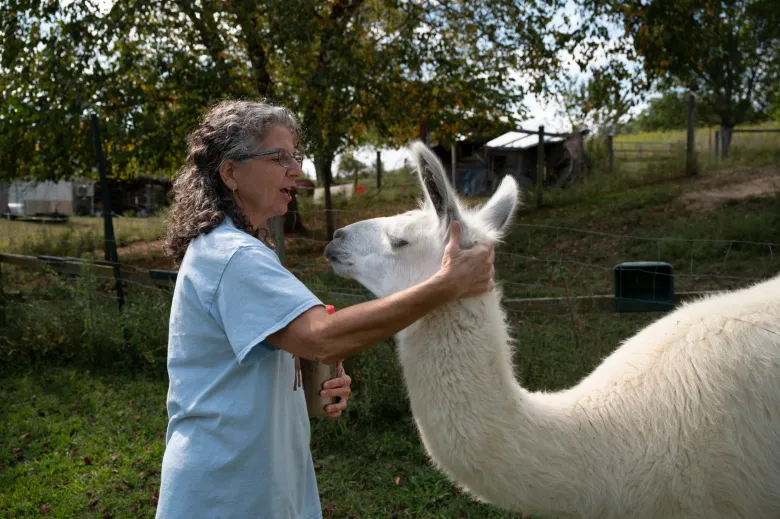
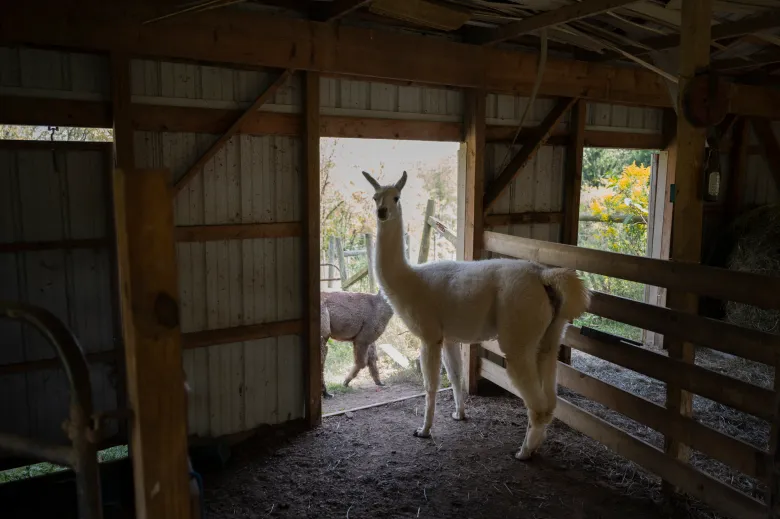
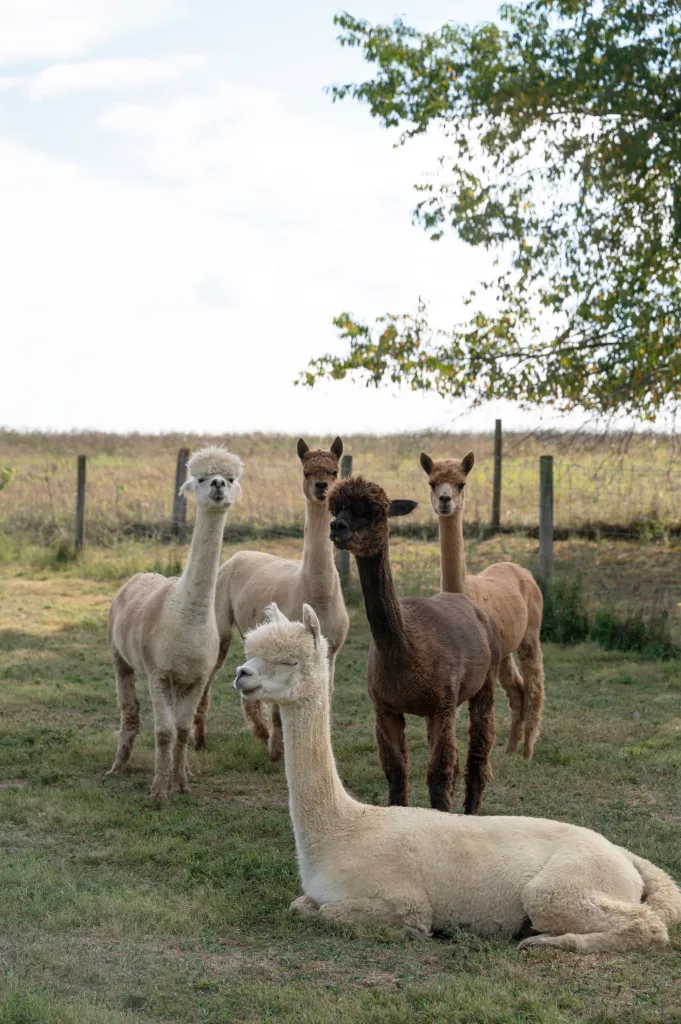
“I saw alpacas and just went, oh my gosh, what an adorable animal,” Burns tells Pittsburgh City Paper. “I didn’t even know what an alpaca was. I had to find out more.”
Convincing her husband took a little work. Farming to him meant cattle or dairy, something established. Alpacas were … not that. They’re smaller. Gentler. Easier on grass. And, crucially for two young parents, not intimidating for kids. After a little West Coast reconnaissance, they bought their first herd out of Oregon that very year, cleared ground, put up fencing, and raised barns board by board.
“We built everything,” she says. “There was nothing here.”
It didn’t take long for the fantasy to collide with reality. Within months, the family discovered their alpacas needed shearing — fast. The professional they’d hired canceled repeatedly.
“So we went to Tractor Supply, bought sheep shears, and did it ourselves,” Burns says, laughing. “They looked like a mess. It took forever. But we learned.”
Learning became the theme. Without a farming background or alpaca-focused vets nearby, the Burns family taught themselves to trim nails, administer meds, and recognize the quirks of alpaca biology. (Alpacas are semi-ruminants; they digest differently than cows and respond differently to medication.)
Her two children grew up in the thick of it, helping with fencing, festivals, product sales, even social media. Her son cyber-schooled through high school, traveling with Mary to alpaca events.
So What Are Alpacas, Really?
Alpacas (vicugna pacos) are domesticated South American camelids, cousins of llamas, descended from wild vicuñas. They’re gentle on the land, nibbling grass without tearing out roots, and their padded feet make less soil impact than cattle or goats. They use communal dung piles (easier to clean, fewer parasites spread). They also make a variety of vocalizations, including humming (especially when curious, distressed, or communicating with each other).
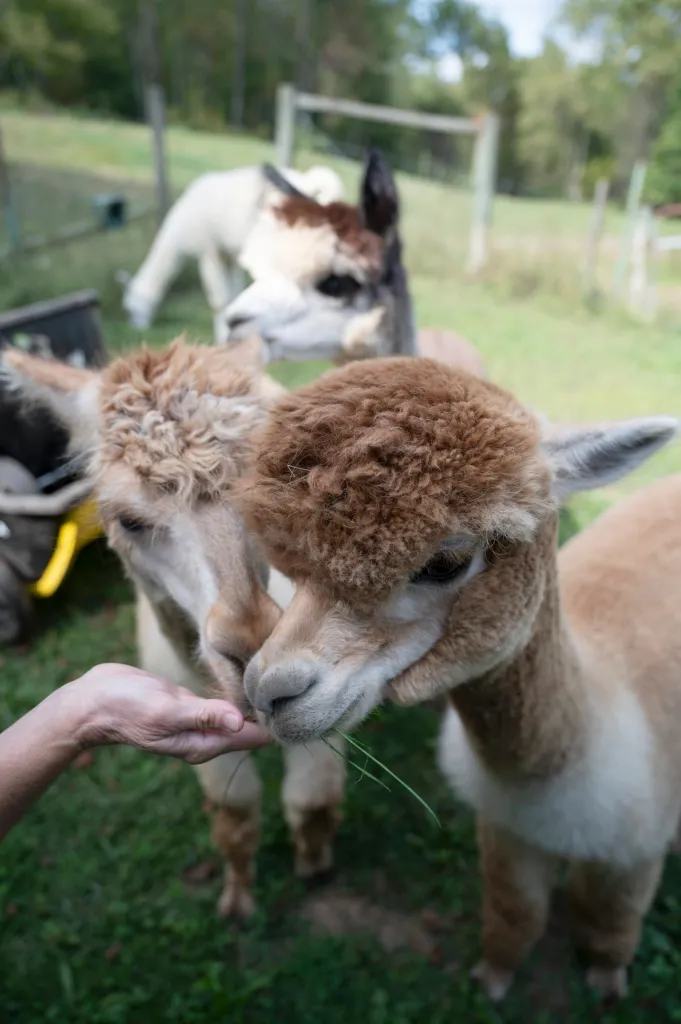
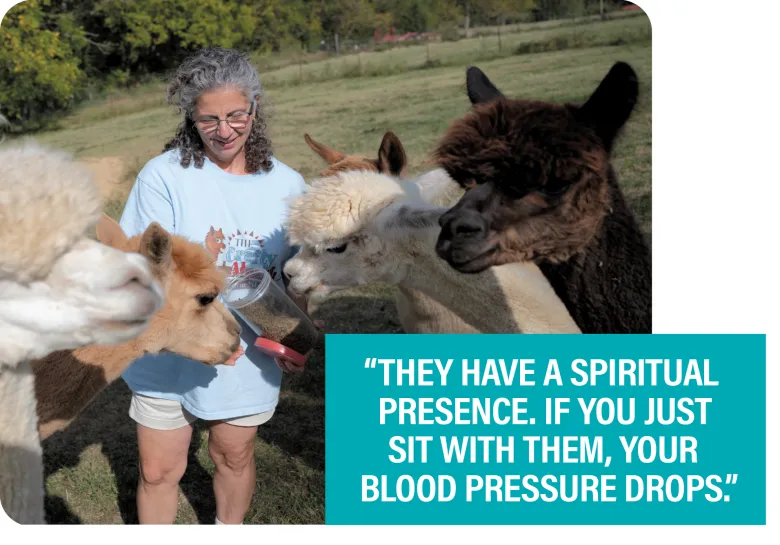
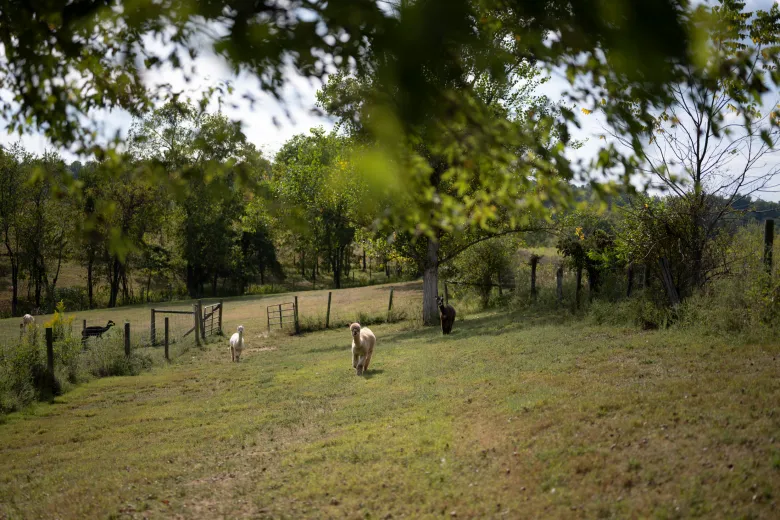
There are two breeds: Huacaya (fluffy, teddy bear fleece) and Suri (silky, dreadlock-like fiber). Burns’ herd is all Huacaya. Each alpaca yields about five to 10 pounds of fleece a year, which is prized for being hypoallergenic, lanolin-free, and softer than sheep’s wool.
“I think the future is fiber,” Burns says. “It makes alpacas more accessible. You don’t need a huge herd or to be in the breeding business to make it work.”
In the U.S., the Alpaca Owners Association recognizes 16 natural colors; some Peruvian classifications list more than 22. Either way, most herds in the U.S. trend brown, white, and black.
Everyone asks about spitting. And yes, alpacas spit, but not the way you think.
“Alpacas only spit at each other,” Burns explains. “That’s their way of saying, that’s my food, that’s my space. [They spit] rarely at people, unless you’re in the crossfire when one doesn’t fully turn their head. They’ll do whatever they can to get away from a person.”
If you’re picturing cuddly golden retrievers with longer necks, recalibrate: alpacas are naturally skittish. Some warm up, some never do, but even the shy ones carry a weirdly calming charge.
“They have a spiritual presence,” Burns says. “If you just sit with them, your blood pressure drops. Your stress falls off.”
Day-to-day, the animals are surprisingly low-maintenance. “We check the fence lines, make sure the water’s running, clean the fields, mow the grass,” Burns says. “The only time it really gets complicated is if they’re sick. Then you’re giving meds every day, sometimes several times a day.”
Ask Burns about her favorite alpaca, and she lights up. “Teddy Bear,” she says immediately, a 16-year-old Huacaya who lets her pet him and exudes calm. Her husband’s favorite is Hera, who once grew so sick she spent months living in their basement while he hand-fed her meds until she pulled through.
Fleece and selfies
Agritourism is what keeps The Crafty Alpaca thriving. Burns has welcomed just about everyone you can imagine: scouting groups, 4-H clubs, birthday parties, nursing homes, entire school buses. She’s even hauled her animals to libraries across the region. In 2025 alone, she estimates she’s done more than a dozen library visits, including a recent stop in Brentwood that drew well over a hundred people.
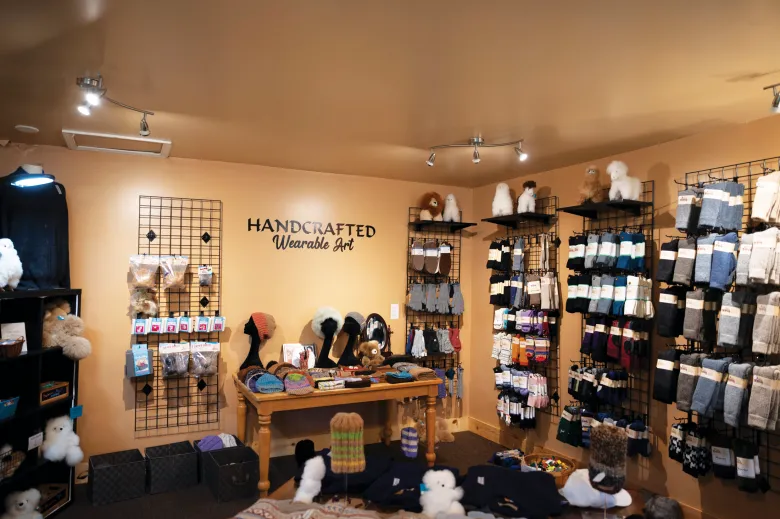
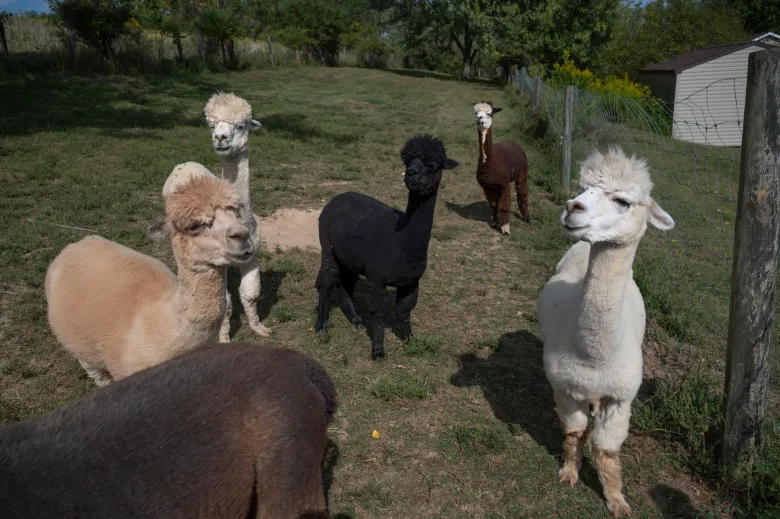
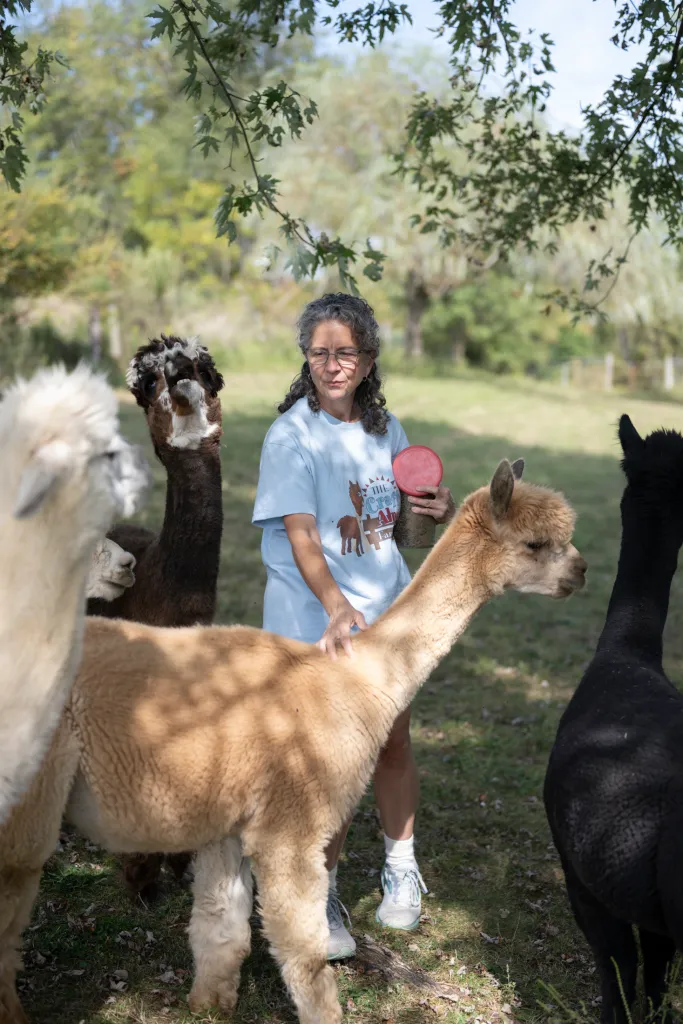
Summer brings a steady buzz to the farm; by fall, the alpacas are minor celebrities on the festival circuit. The fields double as backdrops for engagement shoots, visitors sign up for alpaca treks, and charter buses roll in packed with city folks chasing a taste of rural novelty.
It’s not a gold mine, but it’s sustainable. “Agritourism brings people to the farm, where I can share what I do,” Burns says. “It helps feed the alpacas and keep the farm running. We don’t make a lot of money, but we’re grateful.”
You can go a few directions with alpacas. Some farms outsource fleece to a mill and stock the shop with imports. The Crafty Alpaca chose the harder, slower path: do as much as possible by hand, and keep the rest traceable.
“I’m intrigued with the process, and I want to share it,” Burns says. “Anybody can ship products from Peru or buy wholesale. I want people to know the time, the love, the care that’s gone into every piece. It’s not a batch product. It really is one of a kind.”
Step inside the shop and you see what she means: hats, headbands, mittens, toys, ornaments, and yarn. The yarn even comes labeled with the name of the alpaca who grew it.
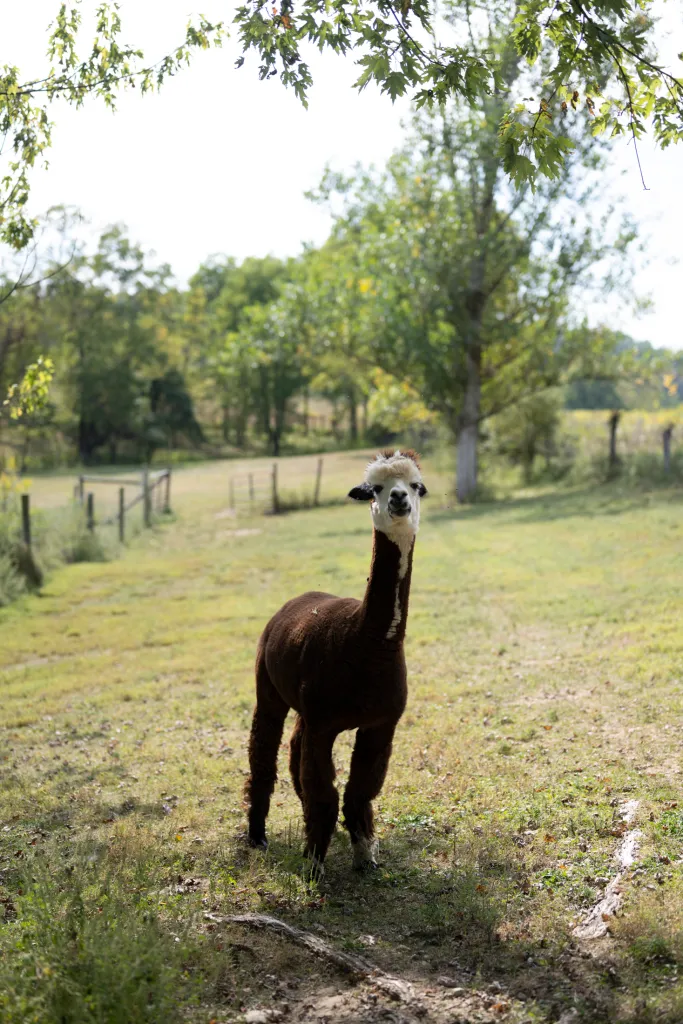
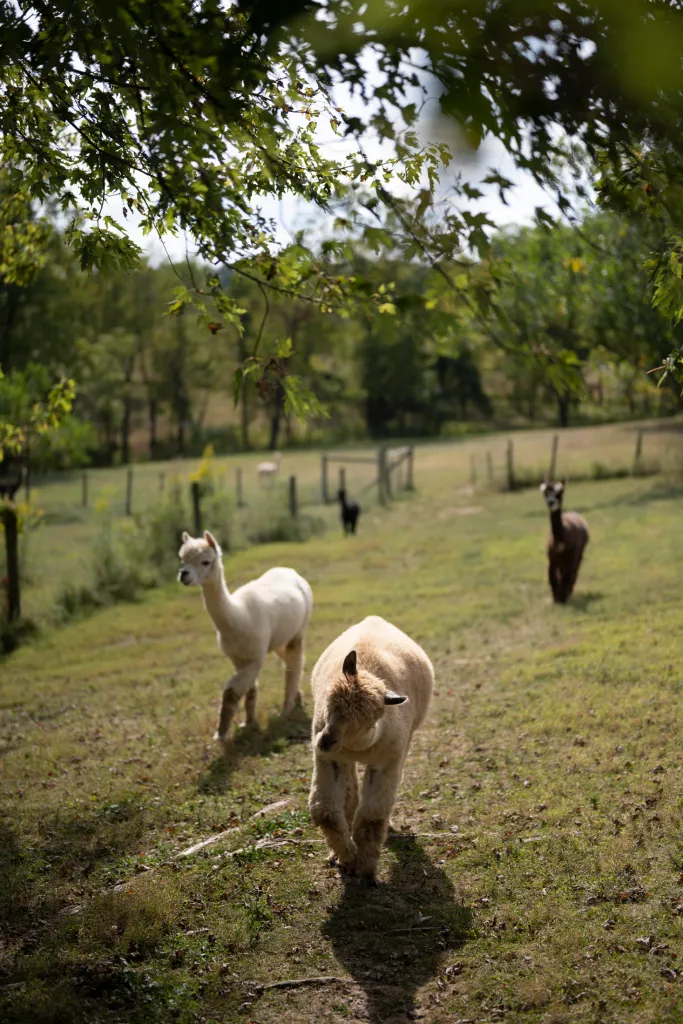
For Burns, the farm is more than fleece — it’s proof of what her family built.
“I just hope that people we’ve come in contact with see our love, and how much we appreciate being able to share it with them,” she says. “There won’t be a second generation of our family farming alpacas. But I hope the farm itself becomes a legacy.”
The combined U.S. llama and alpaca herd has shrunk by nearly half since 2007, according to USDA data. Breeding-for-sale has fizzled; fiber prices are niche. Many farms close. Those that remain survive on experiences, storytelling, and products with meaning.
The Crafty Alpaca is one of them — alive with visitors, workshops, festivals, and a herd of animals that occasionally hum, rarely spit, and reliably produce some of the softest fleece in Pennsylvania.
And if one ever does spit on you? Consider it part of the story you’ll tell on the drive back to Pittsburgh.
This article appears in Fall Guide 2025.





